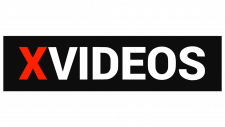Hit Entertainment Logo
Peter Orton launched Hit Entertainment, anchoring it in London, UK, with a mission to craft and share television series for children. Famous for iconic shows like “Thomas & Friends” and “Bob the Builder”, Hit Entertainment focuses on crafting engaging, educational content for young audiences worldwide, becoming a pivotal player in children’s entertainment.
Meaning and history
Founded in 1989 by Peter Orton in London, Hit Entertainment emerged to shape kid’s TV. It focused on educational, fun content. Iconic series like “Thomas & Friends” gained global fame. The company expanded, acquiring rights to other beloved characters. In 2005, Apax Partners bought Hit, enhancing its reach. Mattel acquired it in 2012, broadening its portfolio. Hit’s journey from a small UK firm to a global entertainment powerhouse is remarkable. It revolutionized children’s media, blending education with entertainment.
What is Hit Entertainment?
Hit Entertainment stands as a trailblazer in children’s media, originating from the UK with a vision to meld education with whimsy. It’s the creative force behind timeless characters and shows that have danced through the imaginations of young audiences worldwide, fostering joy and learning in equal measure.
1983 – 1989
The logo presents a bold, minimalist design, with the word “hit!” in lower-case black letters, exuding a playful, yet confident air. An exclamation mark adds emphasis, evoking excitement. Beneath, “HENSON INTERNATIONAL TELEVISION” is spelled out in a no-nonsense, all-caps font, establishing its global media presence. The stark contrast between the playful “hit!” and the formal company name creates a memorable visual dichotomy, appealing to both children and adults.
1989 – 1995
The updated logo pivots to a sleeker aesthetic, embracing modernity. “HIT” takes center stage, rendered in imposing, solid grey letters, asserting its brand authority. The “I” cleverly doubles as a broadcasting tower, symbolizing media transmission and reach. This graphical element, a turquoise globe with crosshairs, suggests a global perspective. The background is subtly shaded, hinting at dimensionality and depth. On the right, “COMMUNICATIONS PLC” runs vertically in a sharp, elongated font, reinforcing the company’s corporate identity. The overall design conveys sophistication and a corporate ethos, marking a significant evolution from the previous, more playful logo.
1994s – 1995
In this iteration, the logo adopts minimalism, shedding any graphic embellishments to focus on the typography. The “HIT” acronym is bold, the font’s weight heavy, implying a solid presence. The letters are monochrome, a stark grey against a white backdrop, exuding simplicity and a no-nonsense approach. The design’s bareness suggests a modern, clean brand identity, a stark contrast to the detailed and colorful logos of its past. Each letter stands independently, spaced generously, which may symbolize the company’s openness to diverse content and ideas. This design is a clear departure towards corporate maturity.
1994 – 1995
The logo has evolved significantly. The “HIT” letters have transformed, now featuring a sleek, grey hue with a subtle gradient. A stylized sphere intersects the ‘H’, lending a modern touch. The “ENTERTAINMENT PLC” text is now vertical, emphasizing verticality and modernity. Overall, the design merges simplicity with a hint of dynamic geometry, reflecting a contemporary corporate image.
1995 – 2001
The logo features an imposing “H” and “T” in a blue gradient, with an image of the planet Earth positioned where the dot traditionally sits above the “I”. The Earth’s vivid blues and browns suggest a focus on global reach. Adjacent, the words “entertainment plc” in a serious, black font emphasize a professional corporate identity. The overall design merges playfulness with a global corporate image.
1996 – 1997
In the 1996 logo, the color shifts to a rich, monochromatic blue, enhancing visual impact. The “HIT” text is bold, with pronounced vertical lines adding depth. The globe appears more prominent. “ENTERTAINMENT PLC” is neatly arranged vertically, reinforcing the logo’s stature. The design conveys stability and global presence, with a straightforward yet strong aesthetic.
2000 – 2008
In the 2000 logo, the globe takes center stage. The ‘HIT’ typography is clean, with a modern sans-serif font, exuding a more contemporary feel. ‘ENTERTAINMENT PLC’ is presented horizontally, emphasizing accessibility and breadth. The overall design shifts towards a dynamic, forward-thinking corporate identity.
2001 – 2007, 2008 – 2014, 2017 – 2018, 2019
The logo presents a bold, blue “H” with a three-dimensional effect, integrating Earth as the dot above the “i” in “HiT”. This design symbolizes global presence and entertainment scope. Below, “entertainment” is written in a sleek, modern font, contrasting with the dominant “H”. The overall impression is one of a modern, international entertainment brand with a clear and direct message.
2007 – 2016
In this 2007 version, the HIT Entertainment logo leaps into vibrant, playful territory. The ‘HIT’ letters now perch atop a three-dimensional, multicolored cube, reminiscent of a child’s building block, infusing a sense of fun and creativity. Each letter adopts a solid, contrasting color against the cube’s faces—red, yellow, and blue—echoing primary colors often associated with children’s toys. The word ‘entertainment’ is rendered in a lower case, friendly red font below, softening the corporate image to seem more accessible and inviting. The overall design shifts towards a more whimsical, approachable look, likely aiming to resonate more with the younger audiences of their content.




















